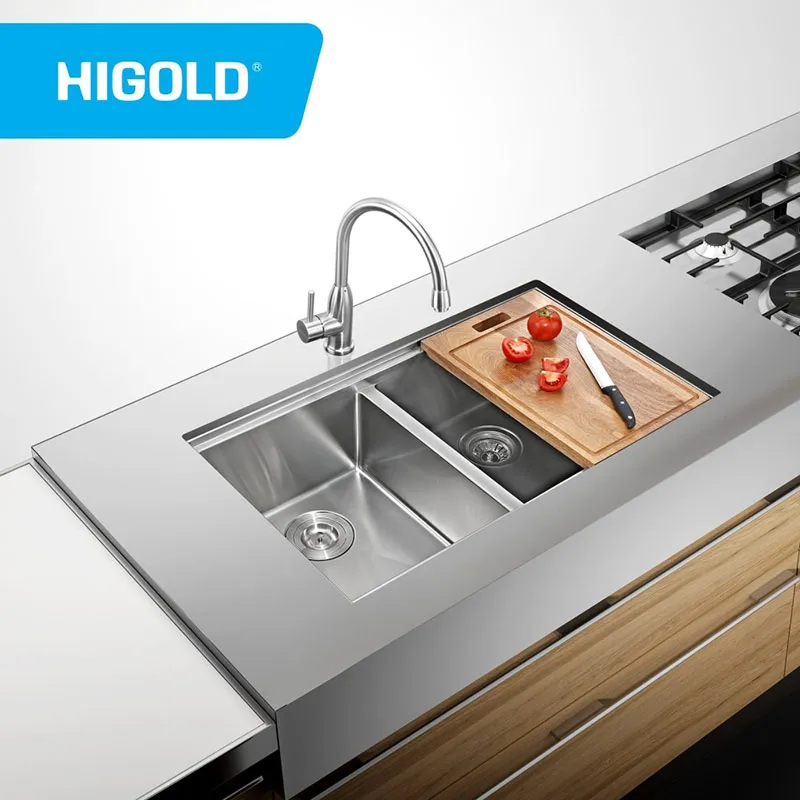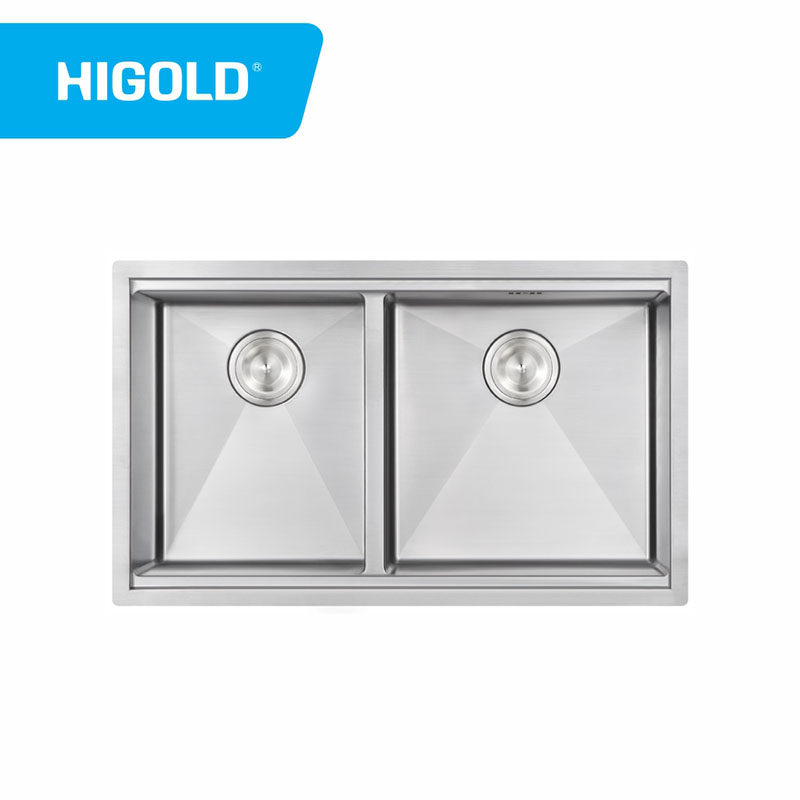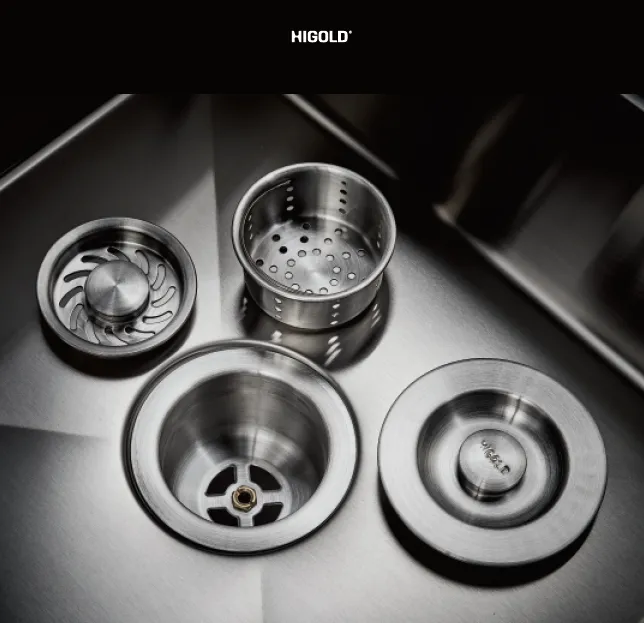The kitchen handmade sink is one of the most frequently used appliances in the home. It handles daily washing tasks while working closely with the kitchen countertop to provide convenience for the family. However, during long-term use, many families will face a common but troubling problem: kitchen handmade sink leaking around the edge. Leaking around the edge of the sink not only damages the kitchen countertop, but can also cause moisture in the cabinet, mold growth, and even greater repair needs.
So, why does the kitchen handmade sink leak around the edge? How can we determine the cause and solve it in time? This article will deeply analyze this issue from multiple aspects to help you find the answer.

What are the reasons for kitchen handmade sink leaking around the edge?
1. Aging or damage of sealing materials
The kitchen handmade sink and the countertop are usually sealed with sealants (such as silicone) to prevent water from seeping into the gap. However, the sealing material may age, crack, or peel over time. This is one of the most common reasons for kitchen handmade sink leaking around the edge.
● Causes of aging: The sealant is exposed to moisture and detergent for a long time, gradually losing its elasticity and sealing performance.
● Common manifestations: The silicone on the edge of the kitchen handmade sink cracks and falls off, and water seeps under the countertop along the gap.
2. Improper installation
The installation quality of the kitchen handmade sink directly affects its sealing performance. If the sink is not properly fixed during the initial installation, or the joint between the countertop and the sink is not completely filled with sealing material, it may cause leakage.
● Common errors: The sink does not fit the countertop completely, resulting in insufficient sealant filling; or the sealant is unevenly applied, leaving gaps.
● Manifestations: The edge of the sink is obviously loose, or the leakage is aggravated when the sink is filled with water.
3. Deformation or damage to the countertop
If the kitchen countertop is deformed due to long-term moisture or excessive pressure, it may cause a gap between the kitchen handmade sink and the countertop, causing leakage.
● Common causes: Wooden or composite countertops expand and deform after absorbing water; stone countertops crack when hit by heavy objects.
● Manifestations: The countertop is warped, cracked, or has uneven edges, so the sink cannot fit tightly against the countertop.
4. Design problems with the sink itself
Some kitchen handmade sinks may have design defects, such as thin edges and unstable structures, which make it difficult to install the sink securely, increasing the risk of leakage.
● Problems with inferior products: The edge material is of poor quality, and it may warp or deform after a period of use.
● Mismatched design: The size of the sink does not match the size of the countertop opening, making it more difficult to seal.
5. Overuse or human damage
Some improper behaviors in daily use may also cause leakage at the edge of the kitchen handmade sink. For example, pressing the edge of the sink too hard, not cleaning up the accumulated water or dirt for a long time, will affect the sealing performance.
● Human factors: Scratching the sealant with knives or sharp objects, or frequently using high-temperature cleaning methods.
● Manifestation: The leakage is concentrated locally and may be accompanied by signs of damaged sealing materials.

How to determine the specific cause of kitchen handmade sink leakage?
Before solving the problem of kitchen handmade sink edge leakage, we need to clarify its specific cause. Here are some common inspection methods:
1. Observe the leakage location
Carefully check the various parts of the kitchen handmade sink edge to find the leakage point.
Pay attention to whether there are obvious water stains or wet marks, especially in the gap where the sink contacts the countertop.
2. Check the sealant status
Gently press the sealant on the edge of the kitchen handmade sink with your hand to observe whether it is loose, falling off or cracked.
If the surface of the sealant becomes hard and yellow, it means that it has aged and needs to be replaced.
3. Test the gap between the sink and the countertop
Wipe the gap at the edge of the sink with a paper towel or dry cloth, then fill the sink with water and observe whether there is water seepage.
If you find a gap between the kitchen handmade sink and the countertop, it may be caused by improper installation or deformation of the countertop.
4. Check the countertop condition
Touch the edge of the countertop with your hand to feel if there is any warping or unevenness.
If there are cracks or damage on the countertop surface, the countertop may need to be repaired or replaced.
5. Observe the stability of the sink
Gently shake the kitchen handmade sink to check if it is loose. If the edge of the sink is unstable, it may be caused by loose installation.

How to solve the problem of kitchen handmade sink edge leakage?
For different reasons for kitchen handmade sink leakage, you can take the following solutions:
1. Replace the sealant
Steps:
● Use a blade or scraper to completely remove the old sealant.
● Use a detergent to clean the contact area between the kitchen handmade sink edge and the countertop to ensure that the surface is clean and oil-free.
● Use high-quality waterproof sealant and apply it evenly on the edge of the sink.
● After installing the sink, press gently with your hand to ensure that the sealant fully fills the gap.
● Recommendation: Choose high-quality silicone products to improve sealing performance and durability.
2. Adjust or reinstall the sink
Steps:
● Remove the kitchen handmade sink from the countertop and clean all old sealing materials.
● Check whether the sink and countertop dimensions match. If there is a problem, readjust the countertop opening.
● When installing the sink, make sure it fits the countertop completely and use an appropriate amount of sealant to fix it.
● Recommendation: If you cannot complete it yourself, it is recommended to ask a professional to assist in the installation.
3. Repair or replace the countertop
Steps:
● For slight countertop warping, professional tools can be used to correct it.
● If the countertop has serious cracks or deformations, the entire countertop may need to be replaced.
● Recommendation: When replacing the countertop, choose a material with strong water resistance, such as quartz or artificial stone.
4. Replace the kitchen handmade sink
If the leakage problem is caused by a design defect or aging damage to the kitchen handmade sink itself, you can consider replacing a new sink.
Recommendation: Choose a sink product that matches the size of the countertop and has reliable quality to avoid similar problems from happening again.

How to prevent kitchen handmade sink edge leakage?
● Check the sealant regularly: Check the sealant status of the sink edge at regular intervals and repair it in time if any problems are found.
● Avoid long-term water accumulation on the countertop: Wipe the kitchen handmade sink edge and countertop in time after use to prevent moisture from seeping into the gap.
● Use the sink correctly: Avoid pressing or hitting the sink edge hard to reduce the possibility of human damage.
● Keep it clean: Clean the dirt and oil stains on the sink edge regularly to extend the service life of the sealant.
What Types of Kitchen Products Does Higold Manufacture?
Higold’s product line includes a variety of stainless steel kitchen sinks, faucets, and custom solutions for commercial and residential use. As a top supplier in China, we specialize in both ODM and OEM projects, providing products that meet the highest standards at competitive prices. Contact us for customized solutions and promotions.


